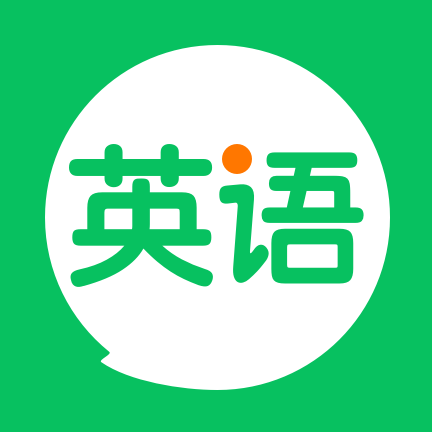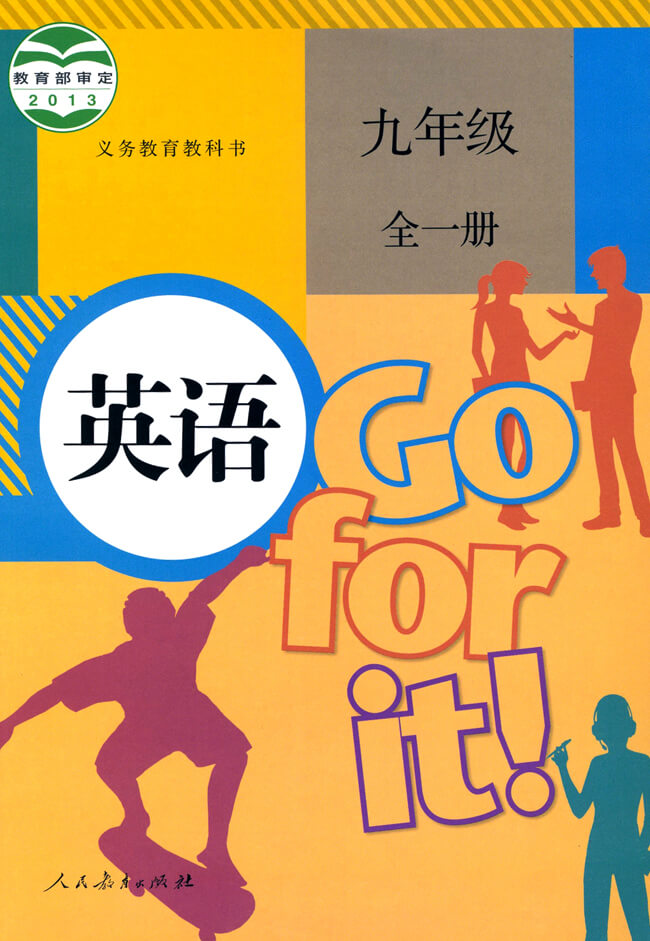英语人教新目标版九年级全一册课文目录
UNIT 6 When was it invented?课文翻译及听力音频
UNIT 6 翻译:第 6 单元
Section A 翻译:A 部分
When was it invented? 翻译:它是什么时候发明的?
Language Goal: Talk about the history of Inventions 翻译:语言目标:谈论发明的历史
1a. Look at the things below. 翻译:1a.看看下面的物件。
In what order do you think they were invented? Discuss them with your group. 翻译:你认为它们被发明的顺序是什么?与小组讨论一下。
Then number them [1-4] (1 = first, 4 = last). 翻译:然后给它们编号 1-4(1 = 第一个,4 = 最后一个)。
I think the TV was invented before the car. 翻译:我认为电视是在汽车之前被发明的。
Well, I think the TV was invented after the car. 翻译:嗯,我想电视是在汽车之后被发明的。
1b. Listen and match the inventions with the years. 翻译:1b.听录音并将这些发明和年份相匹配。
Alice: Was your life very difficult when you were a kid? Grandma: Oh, not really. Why? 翻译:艾丽斯:当你还是孩子时,你的生活困难吗? 奶奶:哦,并不。为什么这么问?
Alice: Well, you didn't have modern inventions like a telephone, right? Grandma: Of course we did! 翻译: 艾丽斯:嗯,你们那时没有像电话这样的现代发明,对吗? 奶奶:我们当然有!
How old do you think I am? The telephone was invented in 1876. 翻译:你以为我有多老?电话是在 1876 年被发明的。
You need to take a history class, Alice! Alice: Haha! How about cars? 翻译:你需要好好上一节历史课了,艾丽斯! 艾丽斯:哈哈!那小轿车呢?
They weren't invented yet, were they? Grandma: Yes, they were. Cars were invented in 1885. 翻译:它们那时还没被发明出来,是吗? 奶奶:不,它们被发明了。汽车是在 1885 年被发明的。
My family had a car. Alice: Well, did you have a TV? Grandma: No, we couldn't afford one. 翻译:我家就有一辆。 艾丽斯:嗯,你那时有电视吗? 奶奶:没有,我们买不起。
They were expensive in those days. The TV was invented around 1927, I think. 翻译:那时候它们很贵。我想电视是大约 1927 年被发明的。
Alice: Well, I know that you didn't have a computer, because we learned in school that personal computers were invented in 1971. 翻译: 艾丽斯:嗯,我知道你那时没有电脑,因为我们在学校学过,私人电脑是在 1971 年被发明的。
Grandma: You're right. But I have one now! 翻译: 奶奶:你说对了。但是我现在有一台!
1c. Student B, cover the dates. 翻译:1c.学生 B 遮住日期。
Student A, ask Student B when the things in the picture in 1b were invented. Then change roles and practice again. 翻译:学生 A 问学生 B,1b 图中的东西是什么时候发明的。然后互换角色再练习。
When was the telephone invented? 翻译:电话是什么时候被发明的?
I think it was invented in 1876. 翻译:我想它是 1876 年被发明的。
2a. 翻译:2a.
Listen and number the inventions [1-3] in the order you hear them. 翻译:听录音,按你听到的顺序给这些发明编号 1-3。
Alex: Hi, Carol. Wow, what are those? Carol: Hello, Alex. 翻译:艾利克斯:嗨,卡罗尔。哇,那些是什么? 卡罗尔:你好,艾利克斯。
Oh, these are some of the interesting inventions that I'm writing about for my English homework. 翻译:哦,这些是一些有趣的发明,我正在写它们的故事作为我的英语家庭作业。
Alex: I see ... What's that, then? Carol: They're shoes with lights. 翻译: 艾利克斯:我明白了⋯⋯那么,那是什么呢? 卡罗尔:它们是装有灯的鞋子。
You use them for seeing in the dark when you get up at night. Alex: Oh, that's a cool idea! 翻译:当你夜间起床时,你可以穿它们以便在黑暗中看清东西。 艾利克斯:哦,那真是一个很酷的想法!
I always hit my toe against something on the way to the bathroom at night. 翻译:我夜间起床上厕所时总是撞到我的脚趾。
Carol: Next is a special ice-cream scoop. This is my favorite invention. It runs on electricity and becomes hot. 翻译: 卡罗尔:下一个是特别的冰淇淋勺。这是我最喜欢的发明。它用电,会变热。
Alex: I know what it's for! It's used for serving really cold ice-cream. Carol: Yes, that's right! 翻译: 艾利克斯:我知道它是用来干嘛的!它用来吃非常凉的冰淇淋。 卡罗尔:是的,说对了!
The last invention I'm going to write about is shoes with special heels. 翻译:最后一个我要写的发明是有特殊跟的鞋。
You can move the heels up and down. 翻译:你可以上下调节鞋跟。
Alex: What are they used for? Carol: Well, you can change the style of your shoes. 翻译: 艾利克斯:它们用来干什么? 卡罗尔:嗯,你可以变化鞋子的款式。
You can raise the heels if you are going to a party or lower them if you are just going out for shopping. 翻译:当去参加派对时,你可以调高鞋跟;当外出购物时,你可以调矮鞋跟。
2b. Listen again and complete the chart below. 翻译:2b.再听一遍,完成下面的表格。
Alex: Hi, Carol. Wow, what are those? Carol: Hello, Alex. 翻译:艾利克斯:嗨,卡罗尔。哇,那些是什么? 卡罗尔:嗨,艾利克斯。
Oh, these are some of the interesting inventions that I'm writing about for my English homework. 翻译:哦,这些是一些有趣的发明,我正在写它们的故事作为英语家庭作业。
Alex: I see ... What's that, then? Carol: They're shoes with lights. 翻译: 艾利克斯:我明白了⋯⋯那么,那是什么呢? 卡罗尔:它们是装有灯的鞋子。
You use them for seeing in the dark when you get up at night. Alex: Oh, that's a cool idea! 翻译:当你夜间起床时,你可以穿它们以便在黑暗中看清东西。 艾利克斯:哦,那真是个酷酷的主意!
I always hit my toe against something on the way to the bathroom at night. 翻译:我夜间起床上厕所时总是撞到我的脚趾。
Carol: Next is a special ice-cream scoop. This is my favorite invention. It runs on electricity and becomes hot. 翻译: 卡罗尔:下一个是特别的冰淇淋勺。这是我最喜欢的发明。它用电,还会变热。
Alex: I know what it's for! It's used for serving really cold ice-cream. Carol: Yes, that's right! 翻译: 艾利克斯:我知道它是用来干嘛的!它用来吃非常凉的冰淇淋。 卡罗尔:是的,说对了!
The last invention I'm going to write about is shoes with special heels. 翻译:最后一个我要写的发明是有特殊跟的鞋。
You can move the heels up and down. 翻译:你可以上下调节鞋跟。
Alex: What are they used for? Carol: Well, you can change the style of your shoes. 翻译: 艾利克斯:它们用来干什么? 卡罗尔:嗯,你可以变化鞋子的款式。
You can raise the heels if you are going to a party or lower them if you are just going out for shopping. 翻译:当去参加派对时,你可以调高鞋跟;当外出购物时,你可以调矮鞋跟。
2c. Make conversations using the information in 2b. 翻译:2c.使用 2b 中的信息进行对话。
What are they used for? 翻译:它们是用来干什么的?
They're used for ... 翻译:它们用来⋯⋯
2d. Role-play the conversation. 翻译:2d.分角色表演对话。
Hey Roy, the subject for my school project 翻译:嘿,罗伊,这次我们学校的项目任务的主题
is 'Small inventions that changed the world.' Can you help me think of an invention? 翻译:是“改变世界的小发明”。你能帮我想一个发明吗?
With pleasure! Let me think ... hmm ... I know! The zipper! 翻译:我很乐意!让我想想⋯⋯嗯⋯⋯有啦!拉链!
The zipper? Is it really such a great invention? 翻译:拉链?它真是这样一项了不起的发明吗?
Think about how often it's used in our daily lives. 翻译:想想在我们的日常生活中会多么频繁地使用它吧。
You can see zippers on dresses, trousers, shoes, bags ... almost everywhere! 翻译:你能看见裙子、裤子、鞋子、背包上都有拉链⋯⋯几乎无处不在!
Well, you do seem to have a point ... 翻译:嗯,看来你说的确实有点道理⋯⋯
Of course! I thought about it because I saw a website last week. The pioneers of different inventions were listed there. 翻译:当然!我想到它是因为我上周看见一个网站。不同发明的创始者都被列在上面。
For example, it mentioned that the zipper was invented by Whitcomb Judson in 1893. 翻译:比如说,它提到拉链是在 1893 年被惠特科姆 · 贾德森发明的。
But at that time, it wasn't used widely. 翻译:不过那时候它并没有被广泛使用。
Really? So when did it become popular? 翻译:真的吗?那它是什么时候开始流行起来的?
Around 1917. 翻译:1917 年左右。
3a. 翻译:3a.
Read the passage quickly and match each paragraph with its main idea. 翻译:快速阅读短文,将段落和其大意相匹配。
Paragraph 1 翻译:第 1 段
Paragraph 2 翻译:第 2 段
Paragraph 3 翻译:第 3 段
Lu Yu and his book Cha Jing 翻译:陆羽及其著作《茶经》
How tea spread to other countries 翻译:茶是如何传播到其它国家的
How tea was invented by accident 翻译:茶是如何偶然发明的
An Accidental Invention 翻译:一项偶然的发明
Did you know that tea, the most popular drink in the world (after water), was invented by accident? 翻译:你知道茶,作为世界上最受欢迎的饮料(仅次于水),是一项偶然的发明吗?
Many people believe that tea was first drunk about 5,000 years ago. 翻译:许多人都认为大约在 5000 年以前就开始了饮茶。
It is said that a Chinese ruler called Shen Nong was the first to discover tea as a drink. 翻译:据说一位叫作神农的中国统治者最早发现了茶可以饮用。
One day Shen Nong was boiling drinking water over an open fire. 翻译:一天,神农在户外的炉火上烧水。
Some leaves from a tea plant fell into the water and remained there for some time. 翻译:茶树上有几片叶子掉入水里并在里面煮了一会。
It produced a nice smell so he tasted the brown water. 翻译:水散发出怡人的香味,于是神农品尝了这褐色的水。
It was quite delicious, and so, one of the world's favorite drinks was invented. 翻译:它非常香醇,就这样,世界上最受欢迎的饮品之一被发明了。
A few thousand years later, 翻译:数千年后,
Lu Yu, 'the sage of tea', mentioned Shen Nong in his book Cha Jing. 翻译:“茶圣”陆羽在他的《茶经》一书中提到了神农。
The book describes how tea plants were grown and used to make tea. 翻译:该书描述了如何种植茶树和泡茶。
It also discusses where the finest tea leaves were produced and what kinds of water were used. 翻译:它还讨论了什么地方出产最好的茶叶,而且应该使用什么样的水来泡茶。
It is believed that tea was brought to Korea and Japan during the 6th and 7th centuries. 翻译:人们认为茶是在公元六至七世纪传播到了日本和朝鲜。
In England, tea didn't appear until around 1660, 翻译:在英国,大约直到1660 年茶才出现,
but in less than 100 years, it had become the national drink. 翻译:但不到100 年的时间里,茶已成为国饮。
The tea trade from China to Western countries took place in the 19th century. 翻译:从中国到西方国家的茶叶贸易始于19世纪。
This helped to spread the popularity of tea and the tea plant to more places around the world. 翻译:这使得茶树和茶叶传播到世界上更多的地方,使之深受欢迎。
Even though many people now know about tea culture, 翻译:虽然现在有很多人都了解一些茶文化,
the Chinese are without doubt the ones who best understand the nature of tea. 翻译:但毫无疑问,中国人才最了解茶之本质(精髓)。。
3b. Read the passage again and answer the questions. 翻译:3b.再次阅读短文并回答问题。
1. When was tea first drunk? 翻译:1. 茶第一次被喝是什么时候?
2. How was tea invented? 翻译:2. 茶是如何被发明的?
3. Who is called 'the sage of tea'? 翻译:3. 谁被称为“茶圣”?
4. What is Cha Jing about? 翻译:4. 《茶经》是关于什么的?
5. When was tea brought to other countries? 翻译:5. 茶是什么时候被带到其他国家的?
3c. 翻译:3c.
Complete the sentences with the correct forms of the verbs in the box. 翻译:用方框中动词的正确形式完成句子。
invent 翻译:发明
drink 翻译:喝
bring 翻译:带来
produce 翻译:生产
trade 翻译:贸易
Grammar Focus 翻译:语法聚焦
When was the zipper invented? 翻译:拉链是什么时候发明的?
It was invented in 1893. 翻译:它是 1893 年被发明的。
Who was it invented by? 翻译:它是由谁发明的?
It was invented by Whitcomb Judson. 翻译:它是由惠特科姆·贾德森发明的。
When was tea brought to Korea? 翻译:茶什么时候被带到韩国的?
It was brought to Korea during the 6th and 7th centuries. 翻译:它在 6 世纪和 7 世纪被带到朝鲜。
What is the hot ice-cream scoop used for? 翻译:热冰淇淋勺是用来干什么的?
It's used for serving really cold ice-cream. 翻译:它用来吃很凉的冰激凌。
Active Voice: Alexander Graham Bell invented the telephone in 1876. 翻译:主动语态:亚历山大·格雷厄姆·贝尔于 1876 年发明了电话。
Passive Voice: The telephone was invented (by Alexander Graham Bell) in 1876. 翻译: 被动语态:电话于 1876 年由亚历山大·格雷厄姆·贝尔发明。
4a. Rewrite the sentences using the passive voice. 翻译:4a.用被动语态改写句子。
1. They sold the fridge at a low price. 翻译:1. 他们以低价出售了这台冰箱。
The fridge was sold at a low price 翻译: 这台冰箱被以低价出售了。
2. Somebody stole my camera from my hotel room. 翻译:2. 有人从我的旅馆房间偷走了我的相机。
3. Where did you take the photos of these wolves? 翻译:3. 你在哪里拍的这些狼的照片?
4. The guide warned them not to climb the mountain in bad weather. 翻译:4. 导游警告他们天气不好不要爬山。
5. Different writers translated the book into different languages. 翻译:5.不同的作家把这本书翻译成不同的语言。
4b. 翻译:4b.
Complete the sentences with the correct forms of the verbs in the box. 翻译:用方框中动词的正确形式完成句子。
eat 翻译:吃
lock 翻译:锁
like 翻译:喜欢
ring 翻译:戒指
invite 翻译:邀请
break 翻译:打破
tell 翻译:告诉
bring 翻译:带来
4c. Decide whether active or passive forms should be used in these sentences. 翻译:4c.确定在这些句子中应使用主动语态还是被动语态。
Write the correct forms in the blanks. 翻译:在空中写出正确的形式。
Section B 翻译:B 部分
1a. The words in the box describe how food can taste. 翻译:1a.方框里的单词描述了食物的味道。
Write them under the correct pictures. Some pictures have more than one word. 翻译:把它们写在正确的图片下面。有些图片不止一个单词。
sweet 翻译:甜的
crispy 翻译:脆的
salty 翻译:咸的
sour 翻译:酸的
1b. Write the name of a different food after each word. 翻译:1b.在每个单词后写下不同食物的名称。
sweet, banana 翻译:甜的;香蕉
crispy 翻译:脆的
salty 翻译:咸的
sour 翻译:酸的
1c. Listen and circle T for true or F for false. 翻译:1c.听录音并圈出正(T)误(F)。
Boy 1: Hey, did you know that potato chips were invented by mistake? 翻译:男孩 1:嘿,薯片是被意外发明出来的,你知道吗?
Boy 2: Really? What do you mean? Boy 1: Well, here on the bag it says that they were invented by a cook called George Crum. 翻译: 男孩 2:真的吗?你指的是什么? 男孩 1:嗯,这个袋子上写着薯片是由一名叫乔治·克拉姆的厨师发明的。
Boy 2: When was that? Boy 1: Oh, it was back in 1853. 翻译: 男孩 2:什么时候的事? 男孩 1:哦,这要追溯到 1853 年。
Boy 2: So, why was it an accident? Boy 1: Well, one day, 翻译: 男孩 2:所以,为什么说是个意外? 男孩 1:嗯,有一天,
a customer came into the restaurant where George worked. 翻译:一名顾客来到乔治工作的餐厅。
He ordered a plate of fried potatoes. When the potatoes came, he said they were cut too thick and sent them back to the kitchen. 翻译:他点了一盘炸土豆。当炸土豆端上来后,他说土豆切得太厚,然后退回了厨房。
Boy 2: So what happened? Boy 1: Well, George was angry, so he cut the potatoes really, really thin, and he cooked them for a long time until they were crispy. 翻译: 男孩 2:所以发生了什么? 男孩 1:嗯,乔治很生气,于是他把土豆切得很薄很薄,然后炸了很长一段时间,直到脆脆的。
And he put lots of salt on them so they were really salty. 翻译:而且他还撒了很多盐在上面,因此土豆片变得非常咸。
He thought the customer would hate them. Boy 2: And? 翻译:他原以为顾客应该会讨厌这盘土豆片。 男孩 2:然后呢?
Boy 1: And the customer loved them and asked for more. 翻译: 男孩 1:然后顾客非常喜欢吃,还想吃更多。
He told the other customers about them, and soon everyone was ordering thinly cut, crispy, salty potato chips. 翻译:他告诉其他顾客土豆片的事,很快,所有人都在点薄切、脆脆的、咸咸的土豆片。
Boy 2: And we're still eating them today. What a cool story! 翻译: 男孩 2:而且我们现在仍然在吃。这个故事真酷!
1d. Listen again. Complete the sentences. 翻译:1d.再听一遍录音。完成句子。
Boy 1: Hey, did you know that potato chips were invented by mistake? 翻译:男孩 1:嘿,薯片是被意外发明出来的,你知道吗?
Boy 2: Really? What do you mean? Boy 1: Well, here on the bag it says that they were invented by a cook called George Crum. 翻译: 男孩 2:真的吗?你指的是什么? 男孩 1:嗯,这个袋子上写着薯片是由一名叫乔治·克拉姆的厨师发明的。
Boy 2: When was that? Boy 1: Oh, it was back in 1853. 翻译: 男孩 2:什么时候的事? 男孩 1:哦,这要追溯到 1853 年。
Boy 2: So, why was it an accident? Boy 1: Well, one day, 翻译: 男孩 2:所以,为什么说是个意外? 男孩 1:嗯,有一天,
a customer came into the restaurant where George worked. 翻译:一名顾客来到乔治工作的餐厅。
He ordered a plate of fried potatoes. When the potatoes came, he said they were cut too thick and sent them back to the kitchen. 翻译:他点了一盘炸土豆。当炸土豆端上来后,他说土豆切得太厚,然后退回了厨房。
Boy 2: So what happened? Boy 1: Well, George was angry, so he cut the potatoes really, really thin, and he cooked them for a long time until they were crispy. 翻译: 男孩 2:所以发生了什么? 男孩 1:嗯,乔治很生气,于是他把土豆切得很薄很薄,然后炸了很长一段时间,直到脆脆的。
And he put lots of salt on them so they were really salty. 翻译:而且他还撒了很多盐在上面,因此土豆片变得非常咸。
He thought the customer would hate them. Boy 2: And? 翻译:他原以为顾客应该会讨厌这盘土豆片。 男孩 2:然后呢?
Boy 1: And the customer loved them and asked for more. 翻译: 男孩 1:然后顾客非常喜欢吃,还想吃更多。
He told the other customers about them, and soon everyone was ordering thinly cut, crispy, salty potato chips. 翻译:他告诉其他顾客土豆片的事,很快,所有人都在点薄切、脆脆的、咸咸的土豆片。
Boy 2: And we're still eating them today. What a cool story! 翻译: 男孩 2:而且我们现在仍然在吃。这个故事真酷!
1e. Make a conversation about the invention of potato chips. 翻译:1e.编一段关于薯片发明的对话。
Use the information in 1c and 1d. 翻译:使用 1c 和 1d 中的信息。
Did you know potato chips were invented by mistake? 翻译:你知道薯片是被意外发明的吗?
Wow, I didn't know that. Who invented them? 翻译:哇,我不知道。是谁发明的?
2a. Do you like basketball? 翻译:2a.你喜欢篮球吗?
Do you watch basketball games? How much do you know about this sport? 翻译:你看篮球比赛吗?你对这项运动了解多少?
Discuss the sport with your partner and share your ideas with the class. 翻译:与你的同伴讨论这项运动,并与全班分享你的想法。
2b. Read the passage quickly. 翻译:2b.快速阅读短文。
What is the main idea of each paragraph? 翻译:每段的主旨大意是什么?
MIND-MAPPING Changing the information you read into a mind map 翻译:思维导图 将你读到的信息转换成思维导图
may help you remember it more easily. 翻译:可能会帮助你更容易记住它。
Do You Know When Basketball Was Invented? 翻译:你知道篮球是什么时候被发明的吗?
Basketball is a much-loved and active sport that is enjoyed by many for fun and exercise. 翻译:篮球是一项许多人都喜爱的积极运动,它既有趣又能健身。
It is over 100 years old and is played by million of people all over the world. 翻译:篮球有 100 多年的历史,而且全世界玩篮球的人不计其数。
It is believed that the first basketball game in history was played on December 21, 1891. 翻译:普遍认为1891年的12月21日是历史上第一场篮球比赛的日子。
Then in 1936 in Berlin, 翻译:然后在 1936 年的柏林,
it became an event at the Olympics. 翻译:篮球成为了奥运会比赛项目。
Basketball was invented by a Canadian doctor named James Naismith, who was born in 1861. 翻译:篮球是由一位名叫詹姆斯・奈史密斯的加拿大医生发明的,他出生于 1861 年。
When he was a college teacher, 翻译:当他在大学任教时,
he was asked to think of a game that could be played in the winter. 翻译:被要求发明一项能让人冬天玩的游戏。
Dr. Naismith created a game to be played inside on a hard floor. 翻译:于是奈史密斯医生创造出一种能在室内硬地板上玩的游戏。
Dr Naismith divided the men in his class into two teams and taught them to play his new game. 翻译:他把他班级里的人分成两队,教他们玩他的新游戏。
Players on the same team must work together to get the ball in the other team's basket. 翻译:同一个队的成员必须一起努力把球投进对方篮筐。
At the same time, they need to stop the competing team from getting the ball into their own basket. 翻译:同时,他们还要阻止对方把球投进自己队的篮筐。
Today, the popularity of basketball has risen around the world, with many young people dreaming of becoming famous players. 翻译:如今,篮球在世界各地越来越普及,许多年轻人都梦想成为著名的篮球运动员。
In China, you can sometimes see people playing basketball in parks, schools and even factories. 翻译:在中国,有时你能看见人们在公园、学校甚至工厂打篮球。
Basketball has not only become a popular sport to play, 翻译:篮球不仅成为一项人们喜欢玩的运动,
but it has also become a popular sport to watch. 翻译:也成为了一项人们喜欢看的运动。
Although America's NBA games are the most famous, the CBA games are becoming more popular in China. 翻译:虽然美国的NBA 比赛是最著名的,但中国的CBA 比赛也越来越受欢迎。
The number of foreign players, including Chinese players, in the NBA has increased. 翻译:NBA 中的外国球员数量有所增加,其中也包括中国球员。
There are also more and more foreign players in the CBA. 翻译:也有越来越多的外籍球员加入 到CBA的赛事中。
Many young people look up to these basketball heroes and want to become like them. 翻译:许多年轻人都仰慕这些篮球英雄,并想成为像他们一样的人。
These stars encourage young people to work hard to achieve their dreams. 翻译:这些球星也鼓励着年轻人为实现自己的梦想而努力。
2c. Complete the mind map with the information in the passage. 翻译:2c.用短文中的信息完成思维导图。
What else can you add to the mind map? 翻译:你还能在思维导图中添加些什么?
2d. Use the mind map to summarize what you and your partner remember about the development of basketball. 翻译:2d.关于篮球的发展,你和你的搭档记住了哪些,使用思维导图总结一下。
Use the following questions to help you. 翻译:使用以下问题作为辅助。
1. Who invented basketball and how is it played? 翻译:1. 谁发明了篮球?篮球是怎么打的?
2. When was the first basketball game in history played? 翻译:2. 历史上第一场篮球赛是什么时候进行的?
3. Why were the Berlin Olympics important for basketball? 翻译:3. 为什么柏林奥运会对篮球很重要?
4. What are the professional basketball groups in America and China? 翻译:4. 美国和中国的职业篮球团体分别是什么?
5. How popular is basketball? 翻译:5.篮球有多受欢迎?
2e. What do you think of famous basketball players? 翻译:2e.你觉得著名的篮球运动员怎么样?
Make a list of good and difficult things about being a famous basketball player. 翻译:列一个清单,指出成为一名著名篮球运动员的好处和困难。
3a. Think of something that you do not like to do. 翻译:3a.想想你不喜欢做的事情。
Then think of an invention that could help you. Make notes. 翻译:然后想出一个可以帮助你的发明。做下笔记。
3b. Imagine you are a business person. 翻译:3b.想象你是一个商人。
Write a description of your new invention. Try to sell the invention to the class. 翻译:写一篇关于你新发明的描述。试着把这项发明卖给全班同学。
Self Check 翻译:自我检查
1. Complete the passage with the correct forms of the words in the box. 翻译:1. 用方框中单词的正确形式填空。
invent 翻译:发明
doubt 翻译:怀疑
mention 翻译:提到
website 翻译:网站
all of a sudden 翻译:突然
2. Rewrite these sentences using the passive voice. 翻译:2. 用被动语态改写这些句子。
1. Someone stole my watch. 翻译:1. 有人偷了我的手表。
2. They used five eggs to make this big cake. 翻译:2. 他们用了五个鸡蛋做了这个大蛋糕。
3. When did they invent the personal computer? 翻译:3. 他们是什么时候发明个人电脑的?
4. They asked us not to run in the hallway. 翻译:4. 他们叫我们不要在走廊里跑。
5. Someone took the video back to the store. 翻译:5. 有人把录像带带回了商店。
3. Find out information about an invention you would like to know more about 翻译:3. 找出你想知道的发明的更多信息,
and write sentences below. 翻译:并在下面写下句子。
最新学习记录 更新时间:2025-11-28 08:36:00



 切换教材
切换教材